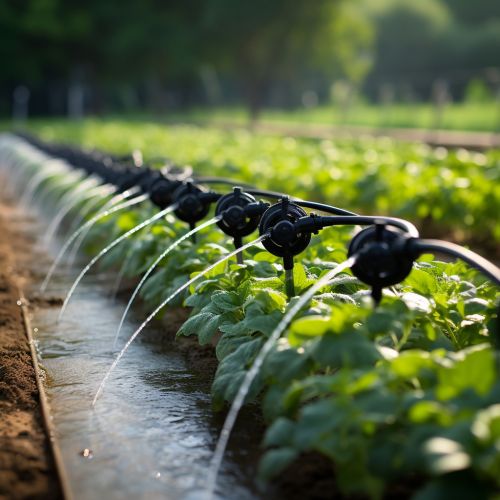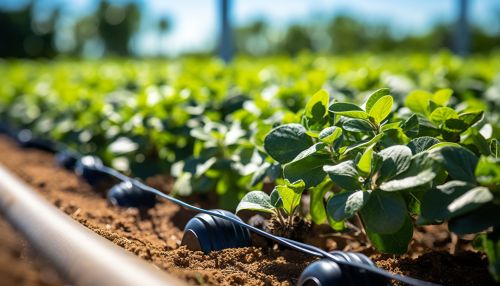Localized irrigation
Introduction
Localized irrigation is a method of irrigation that delivers water directly to the root zone of plants. This technique is also known as micro-irrigation or localized watering. It is a highly efficient form of irrigation that minimizes water waste and promotes optimal plant growth.


History
The concept of localized irrigation dates back to ancient civilizations. The earliest forms of this irrigation method were seen in the Middle East and North Africa, where water was a scarce resource. These early systems involved the use of clay pots or animal skins to slowly release water directly to the roots of plants.
Types of Localized Irrigation
There are several types of localized irrigation systems, each with its own unique characteristics and advantages. These include drip irrigation, subsurface drip irrigation, and micro-sprinkler irrigation.
Drip Irrigation
Drip irrigation is the most common form of localized irrigation. It involves the use of a network of tubes, pipes, and emitters to deliver water directly to the root zone of plants. This method is highly efficient as it minimizes water waste by reducing evaporation and runoff.
Subsurface Drip Irrigation
Subsurface drip irrigation is a variation of drip irrigation where the water is delivered directly to the root zone of plants through a network of tubes buried below the soil surface. This method is particularly effective in areas with sandy soils or high winds that can lead to significant evaporation losses.
Micro-Sprinkler Irrigation
Micro-sprinkler irrigation is a form of localized irrigation that uses small sprinklers to deliver water to the root zone of plants. This method is often used in orchards and vineyards, where the water needs of the plants are high.
Advantages of Localized Irrigation
Localized irrigation offers several advantages over traditional irrigation methods. These include water efficiency, improved plant health, and reduced labor costs.
Water Efficiency
Localized irrigation is highly water-efficient. By delivering water directly to the root zone of plants, it minimizes water waste due to evaporation and runoff. This is particularly beneficial in areas with limited water resources.
Improved Plant Health
Localized irrigation promotes optimal plant health by providing a consistent supply of water directly to the root zone. This helps to prevent water stress and promotes healthy growth and development.
Reduced Labor Costs
Localized irrigation systems are typically automated, reducing the need for manual watering. This can result in significant labor cost savings.
Disadvantages of Localized Irrigation
Despite its many advantages, localized irrigation also has some disadvantages. These include the initial cost of the system, the need for regular maintenance, and the potential for root disease.
Initial Cost
The initial cost of installing a localized irrigation system can be high. However, the long-term water and labor cost savings often offset this initial investment.
Maintenance
Localized irrigation systems require regular maintenance to ensure they continue to operate efficiently. This includes checking and cleaning the emitters to prevent blockages, and monitoring the system for leaks.
Root Disease
Localized irrigation can increase the risk of root diseases if not properly managed. This is because the constant moisture in the root zone can create conditions that favor the growth of certain pathogens.
Conclusion
Localized irrigation is a highly efficient irrigation method that delivers water directly to the root zone of plants. Despite its initial cost and maintenance requirements, it offers significant benefits in terms of water efficiency, plant health, and labor cost savings.
